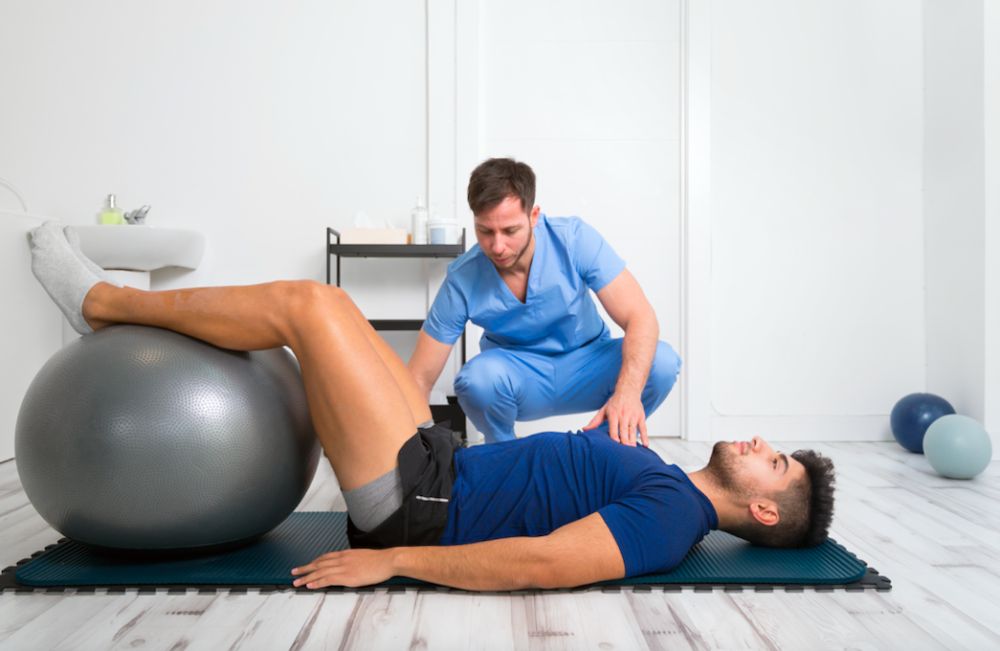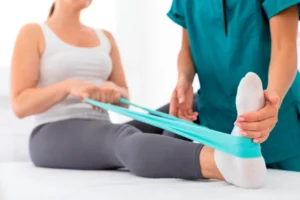Hip arthritis also known as hip osteoarthritis, is a condition characterized by the inflammation of the hip joint. Owing to the breakdown of cartilage, which acts as a cushion between the bones of the hip joint, this condition can be quite painful and may lead to reduced mobility and quality of life. It is more common in older individuals, as it is often associated with the wear and tear of the joint over time.
Causes of Hip Arthritis
Several factors can contribute to the development of hip arthritis:
Age: The risk of hip arthritis increases with age as the cartilage in the hip joint naturally wears down.
Genetics: Some individuals may be genetically predisposed to hip arthritis.
Injury: A history of hip injuries or fractures can increase the risk of arthritis in the affected joint.
Obesity: Excess body weight puts added stress on the hip joint, increasing the risk of arthritis.
Gender: Women are more likely to develop hip arthritis than men.
Repetitive Stress: Certain occupations or activities that involve repetitive stress on the hip joint can contribute to arthritis.
Common Symptoms of Hip Arthritis
Hip arthritis can manifest in various ways, and if untreated, its symptoms may worsen over time. Some of the most common symptoms include:
- Pain: Individuals with hip arthritis often experience pain in the hip or groin area. The pain can range from mild to severe and may be constant or intermittent.
- Stiffness: Hip arthritis can cause stiffness in the hip joint, which may limit range of motion.
- Reduced Mobility: As the condition progresses, it can become increasingly challenging to perform daily activities like walking, climbing stairs, or getting in and out of chairs or a car.
- Weakness: Muscles surrounding the hip joint may weaken due to reduced use, exacerbating the mobility issues.
- Crepitus: Some people with hip arthritis may hear or feel a grating sensation when moving the hip.

Role of physical therapy in hip arthritis:
Physical therapy is a non-invasive and highly effective treatment approach for hip arthritis. It aims to alleviate pain, restore mobility, and enhance the overall function of the hip joint. Here’s how physical therapy can help:
- Pain Management: Physical therapists employ various techniques, including manual therapy, modalities like heat or cold therapy, and specific exercises to reduce pain. They may also teach individuals self-management strategies to control pain at home.
- Improving Joint Function: Physiotherapy focuses on enhancing joint mobility and function. Therapists design personalized exercise programs that target the hip joint’s range of motion and strength. These exercises help individuals regain mobility and reduce stiffness.
- Gait Training: Physical therapists can evaluate an individual’s walking pattern (gait) and identify abnormalities that may exacerbate hip arthritis symptoms. They then work on correcting these abnormalities, ensuring proper alignment and movement.
- Education: Understanding the condition is crucial. Physical therapists educate individuals about hip arthritis, its causes, and strategies to manage symptoms. This knowledge empowers patients to actively participate in their recovery.
- Assistive Devices: Physical therapists may recommend assistive devices like canes or crutches to reduce the load on the affected hip and enhance stability during walking.
- Weight Management: For individuals with obesity, weight management is essential. Physical therapists can provide guidance on maintaining a healthy weight, which can significantly reduce stress on the hip joint.
- Adaptive Techniques: Physiotherapists teach adaptive techniques for performing daily activities with minimal strain on the hip joint. This includes strategies for sitting, standing, and bending.

Patient-Centered Approach
Physical therapy for hip arthritis is highly individualized. Therapists consider the patient’s specific symptoms, needs, and goals when designing an individualised treatment plan. The goal is not only to alleviate pain but also to enhance the patient’s overall quality of life by improving mobility and function.
Incorporating Physical Therapy into Your Life
If you are experiencing hip arthritis symptoms, it’s essential to consult with a healthcare professional. They can assess your condition and recommend physical therapy if appropriate. A physical therapist will work closely with you to create a tailored treatment plan that addresses your unique needs and goals.
Functional Manual Therapy®️ (FMT™️) offered at VARDĀN has been effective in addressing hip arthritis by employing various pain-relief methods, including manual therapy and joint mobilization. Tailored exercises are recommended to improve flexibility, reduce stiffness, and mitigate discomfort associated with this condition. Physical therapy to us is not about treating pain; it’s about helping individuals regain control of their lives, one pain-free step at a time. To know more about FMT™️ call us at :+91 011 43580720-22 or write to us on: vardan@timesgroup.com




